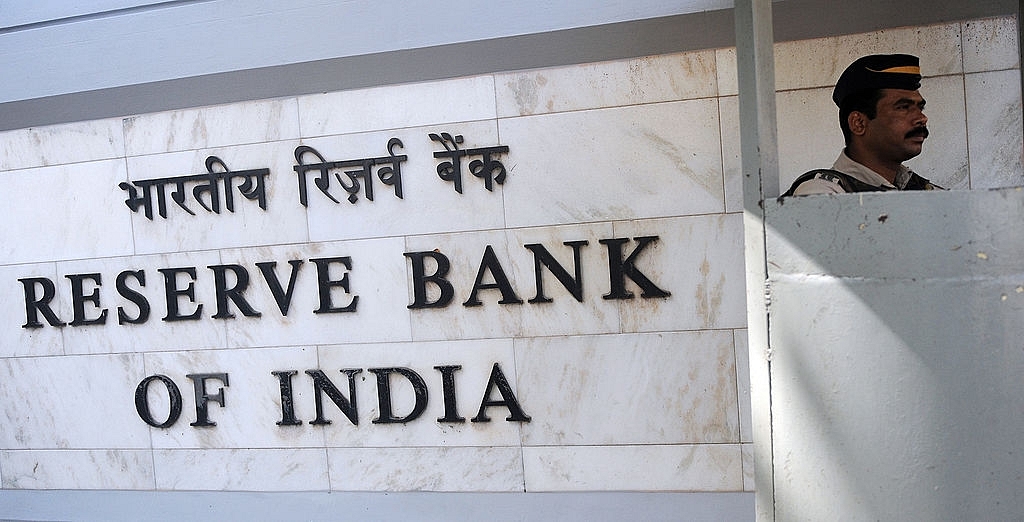Economy
When CPI And WPI Are Not Talking To One Another, We Get Noise, Not Signals
- Making policy looking at the rear-view mirror – which is what indices are all about – is bad enough. Making it with numbers that are confusing or suspect is folly.
- Till our various indices are in alignment, we need to evolve policy from more micro-level and sectoral data.

The Reserve Bank of India (RBI) head office in Mumbai (PUNIT PARANJPE/AFP/Getty Images)
How do you make sensible policy when one index shows south and another north? Last week, retail inflation as measured by the Consumer Prices Index (CPI) hit a five-year low at 3.17 per cent in January. Yesterday (14 February), the other price index, the Wholesale Prices Index (WPI), one the Reserve Bank of India (RBI) claims not to be watching, hit a two-and-a-half year high of 5.25 per cent, rising with a jerk from December’s 3.39 per cent.
One index is saying that inflation at the wholesale level is zooming; another is saying inflation at the consumer end is crashing. If one index is wrong, which one is it? If both are right, what do we conclude from the different directions they are pointing to? If neither is right, what use are these indices to us, or to the government or the RBI? Making policy looking at the rear-view mirror – which is what indices are all about – is bad enough. Making it with numbers that are confusing or suspect is folly.
This is not the first time the two price indices have acted as if the other did not exist. For much of 2014 and 2015, it was the other way around. While the CPI was screaming inflation, the WPI was either in deflation or disinflation territory.
So how do we read these signals, assuming they are signals at all?
One, since the two indices measure different things with different weightages, we can tentatively conclude that the cost pressures being captured at the wholesale end are not being transmitted to the consumer. Whether this is the demonetisation effect or some other pressure on consumer demand, we cannot be sure for now. But clearly costs are not being passed on fully to consumers. This means producers are still hurting, and revival is further away than we thought. What sense does it make for the RBI to pretend that we need a neutral monetary policy, when the economy may need a stimulus?
Two, the statisticians seem to be slow coaches, as the WPI has a base that is 13 years old (2004) while the CPI is more recent (2012). The Index of Industrial Production (IIP), which fell 0.4 per cent in December, is also of WPI vintage. The new GDP/GVA measurements have a base year of 2011-12.
It is simply inexcusable that it should take nearly a decade for our statisticians to update indices. As a rule, most indices that measure similar things (CPI/WPI), or indices that are like subsets of another (IIP/GVA) should have the same base years. Or else we are constantly comparing apples and oranges and getting totals in pineapple.
Three, our gross domestic product (GDP) deflators are also suspect, for we get real GDP figures based on a deflator that is a mix of CPI and WPI. But if the two indices are pointing in different directions, how can the GDP deflator be correct? Logically, we need a producer prices index (PPI) to deflate nominal GDP with a combo of consumer and producer price inflation. Why don’t we have a PPI even after years of talking about one? This is data carelessness we cannot afford.
If our data are suspect, what is the point in making policies based on these indices? Can the RBI, which switched from WPI to CPI as the inflation number to focus on, ever be sure that it is watching the right basket of eggs to make its monetary omelette from? And when IIP is flat and GDP fairly buoyant, what can it really conclude about the trajectory of growth?
Indian statistics is a nightmare, a story of the blind men and the elephant. Till our various indices are in alignment, we need to evolve policy from more micro-level and sectoral data. The big indices are noise more than signal.
Introducing ElectionsHQ + 50 Ground Reports Project
The 2024 elections might seem easy to guess, but there are some important questions that shouldn't be missed.
Do freebies still sway voters? Do people prioritise infrastructure when voting? How will Punjab vote?
The answers to these questions provide great insights into where we, as a country, are headed in the years to come.
Swarajya is starting a project with an aim to do 50 solid ground stories and a smart commentary service on WhatsApp, a one-of-a-kind. We'd love your support during this election season.
Click below to contribute.
Latest